 |
SRGC Bulb Log Diary |
| Home Recommend This Site To A Friend |
|
BULB LOG 11 12th March 2003
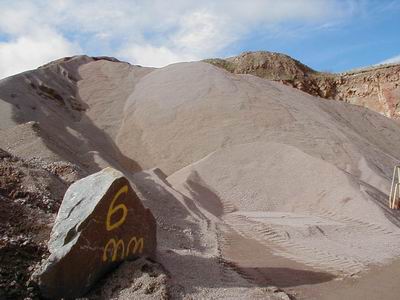
Gravel heap 6mm The job of the week was replenishing our stock of 6mm gravel which we use in all our compost mixes as well as for top dressing the pots. Luckly Maggi just had to shift the 1.5tonnes on the wee truck that I borrowed not the several thousand tonnes in the big heap at the quarry. 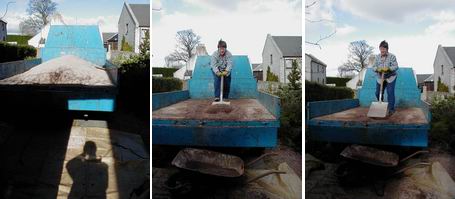
MY gravel This is such an exciting time with most of the monocot seeds now germinating I visit the seed frames several times a day. 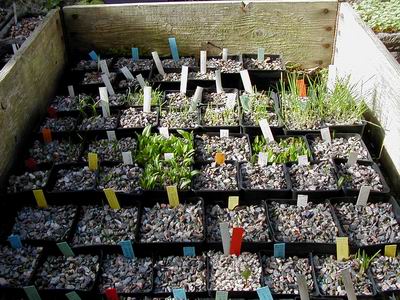
Seed frame The bulb frames are also bursting into top gear with new flowers appearing each day some flowering for the first time from seed. 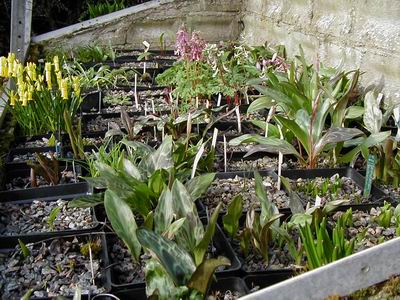
Bulb frame It is always fascinating the variation that you get when you raise plants from seed and sometimes they do it all them selves like these Corydalis seedlings that self sowed in the garden beds. 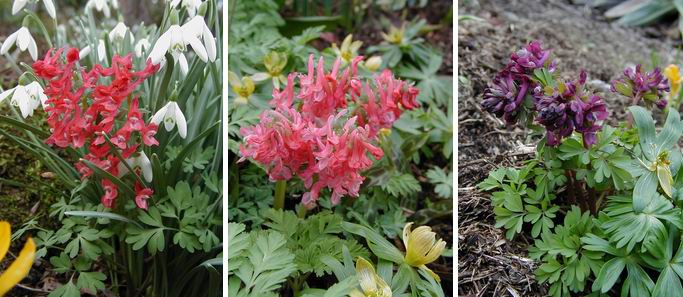
Corydalis x3 They are the offspring of Cc. 'Beth Evans' and 'George Baker' and it shows why only vegitativly propagated plants should be distributed under cultivar names. 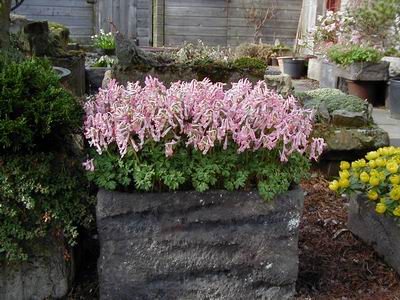
Corydalis 'Beth Evans' trough This is how we ensure that we keep our stock pure by growing them in a trough and repotting them every year. Paul Christian states in his catalogue that the plant he distributes as Corydalis speciosa (bred by William Schact at Munich ) is the same as C. 'Beth Evans' . I can ensure him that it is not. Below the plant in the pot is his C. speciosa pictured against the 'Beth Evans' trough, I think the difference is clear even in this picture, they are both excellent plants 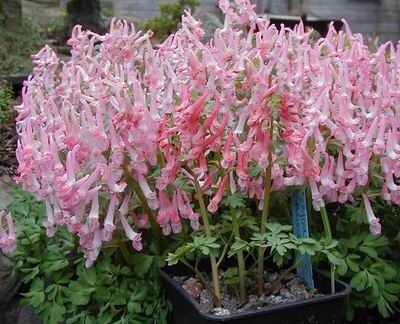
Corydalis 'Beth Evans' v speciosa We have lots of Corydalis in flower both in the garden and under glass where the sweet honey scent they produce is a beautiful sensation. The true Corydalis nudicaulis is now readily available, if a bit costly, and it is a real stunner with its dramatic colouring. 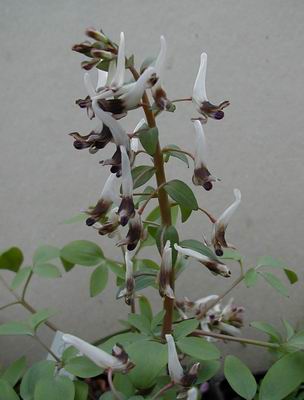
Corydalis nudicaulis It is often written that Corydalis are not self compatible and you need two clones to get a seed set. I do not find this to be true and as long as I pollinate the flowers with a paint brush we get a good set of viable seed to increase our stocks. 
Pollinating corydalis In the picture the top left single flower shows it untouched, with the top, inner and lower petals intact. If you look carefully at the bottom flower you will see that the inner petal has been displaced downwards revealing the pollen and the stigma. I do this by gently holding the spur and using a fine brush push down on this inner petal, which has a central split, and in this one motion I not only reveal the pollen but transfer some on to the stigma and this usually results in good seed set. 
Crocus pelistericus x scardicus This Crocus appeared in a pot of C. pelistericus seedlings, the parent was open pollinated and not surprisingly we grow Crocus scardicus right beside it in the frame, we obviously have a hybrid. This hybrid has been named Crocus Gothenbergii after the famous garden where the cross was first discovered a few years ago. I am not sure I would call it beautiful but it is different. 
Frit Kittaniae & pinardi Frit Kittaniae (on the left) is another odd ball but it is given specific rank it is quite variable in the amount of brown markings on the other wise yellow tepals. There is good reason to believe that it is a hybrid between F. pinardi (pictured right) and yellow F. carica. Plants always have a way of showing the Gardner up like this seedling Frit Alburyana flowering for the first time in an open frame and looking much better than the ones we have under glass. I think I will learn from this and try some more outside next season. 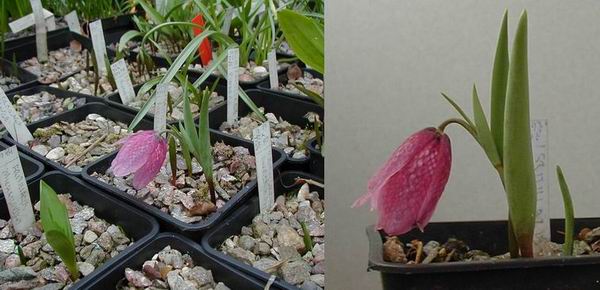
Frit Alburyana x2 The last picture for this week is a fabulous form of Frit sewerzovii that I got from Janis Ruksans as a 'liliflora seedling'. He described it as a large flowered form of the type and he was not exaggerating it is a cracking bulb, what do you think? 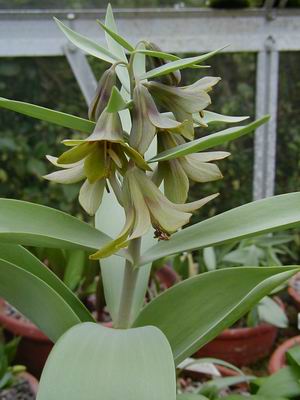
Frit sewerzovii 'liliflora seedling' ^ back to the top ^ |